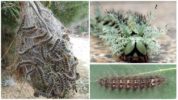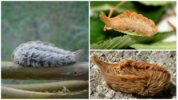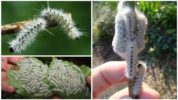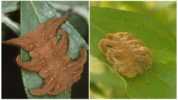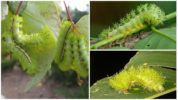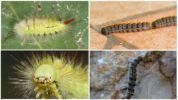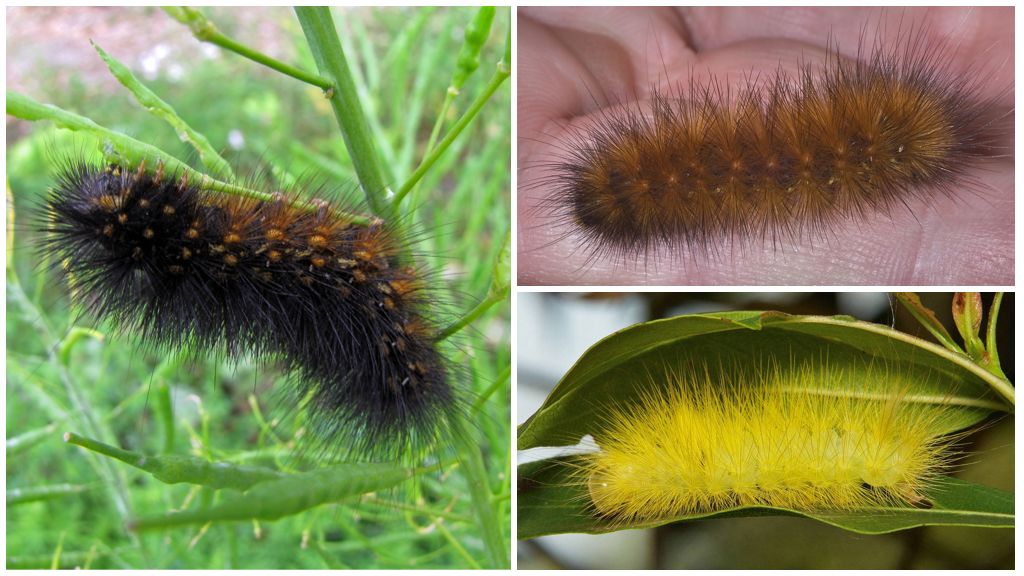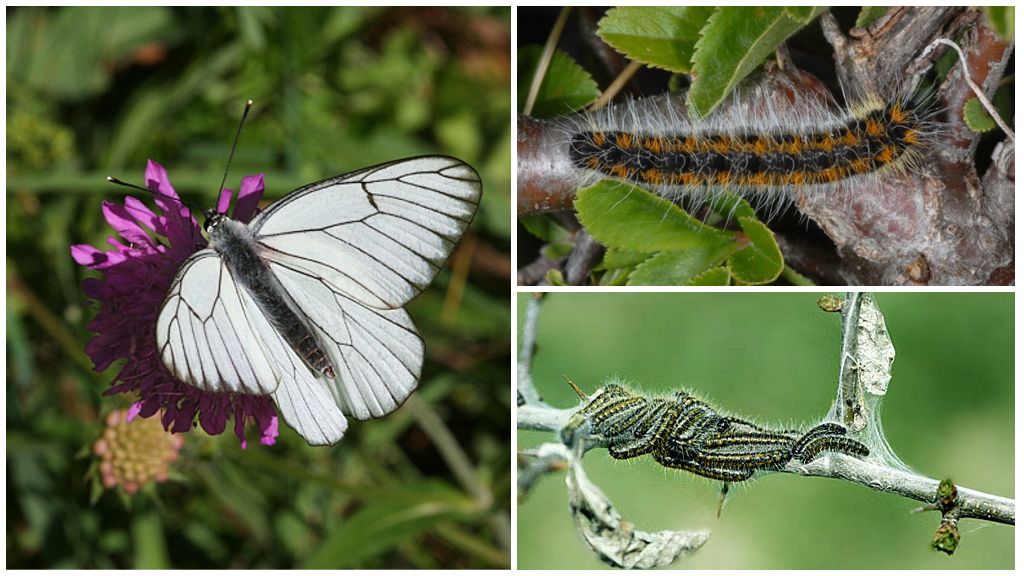- Lonomy
- Megalopyge opercularis
- Hickory Bear
- Monkey caterpillar
- Saturnia io
- Russian species of poisonous caterpillars
Unlike other insects, most butterflies are beautiful even in the larval stage. Caterpillars often have a more beautiful appearance than a butterfly. Most future butterflies are completely harmless to humans, but there are also dangerous ones among them. By a strange combination of circumstances, truly poisonous caterpillars did not appear on the territory of Eurasia, inhabiting Australia and both the American continent. But Eurasia is not deprived of caterpillars that are unpleasant for humans.
Types of Poisonous Caterpillars
Not all of these species are dangerous to humans, as some of them accumulate in the body the poison of those plants that they feed on. Formally, they are poisonous. The real danger is that these species are only for those who decide to eat them. Most dangerous caterpillars live in tropical and subtropical zones of the planet.
Lonomia (Lonomia obliqua)
Many species of lonomia have very colorful larvae. Bright appearance in the "cub" arose for a reason. They are poisonous.
On a note!
But in lonomy, the appearance of a caterpillar is more like a stick on which a rare moss has grown. With such a plain appearance, this is the most poisonous caterpillar on the planet. Her poison can kill a person.
From the venom of the lonomy of the face in the countries of South America, several people die every year. But not everything is so scary. In fact, the poison of lonomy enters the human body in small doses. A single touch of hollow spikes of lonomia will not do much harm. For death, it is necessary to touch the caterpillar from 20 to 100 times, depending on the stability of the body. Obtaining such a dose of poison is actually not difficult. It is enough to accidentally touch a cluster of caterpillars on a tree trunk. Due to their protective coloration, these larvae are poorly visible.
The toxic substance has an anticoagulant effect and can accumulate in the body. When a critical dose of poison is reached, a person begins internal bleeding, which can lead to death. Intracranial hemorrhage is especially dangerous.

Megalopyge opercularis
The insect lives on the American continents and does not have a Russian name. The larva of this butterfly is sometimes called the coquette. It looks like a lump of hard fur with a ponytail. To protect against enemies, this caterpillar has spikes with poison hidden in stiff bristles.
When touched, the spikes pierce the skin and break, releasing the poison. In the damaged area there is a strong "jerking" pain, spreading throughout the limb. Red spots appear at the place where the poison enters the tissue. With severe poisoning or individual intolerance, the following can occur:
- vomiting
- nausea;
- headache;
- damage to the lymph nodes;
- discomfort in the stomach.
Anaphylactic shock or shortness of breath is sometimes possible. In normal cases, signs of Megalopid poisoning disappear after a few days. The pain goes away in an hour. But when you receive a large dose of the poison, the pain can last up to 5 days.
On a note!
This is one of the most poisonous caterpillars in North America.
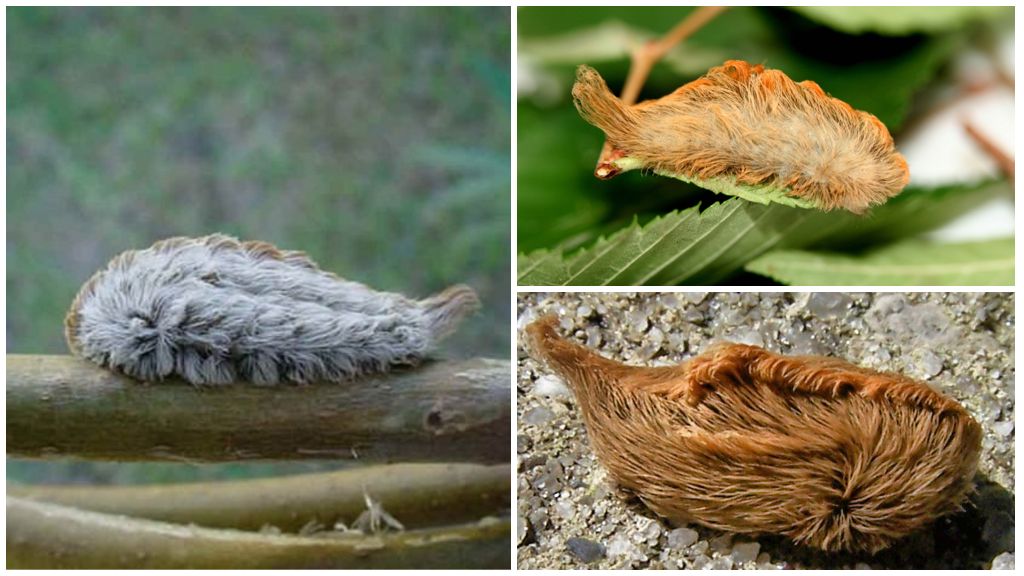
Hickory Bear (Lophocampa caryae)
The white fluffy caterpillar does not seem dangerous. She has no poison. But easily separated bristles are covered with microscopic notches.With rough skin on the hands, this caterpillar cannot be harmful, but for some its bristles cause itching and rash. People suffering from allergies are especially affected by bristles.
Important!
Do not rub your eyes after touching this caterpillar. This is the main danger posed by Dipper hickory. Serrated bristles cry into the mucous membrane of the eye and can only be removed from there surgically.
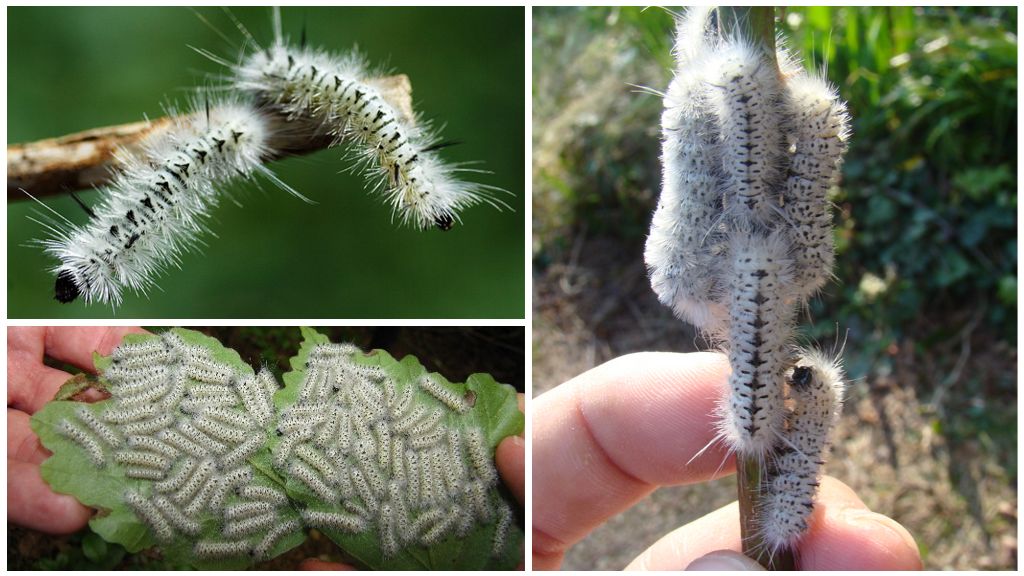
Monkey caterpillar
Larva of a witch moth. In both faces, an unattractive insect. It lives in the south of the USA. Belongs to the family of slugs, which have suckers instead of paws. When moving, it resembles slugs. On the back has 6 pairs of outgrowths covered with setae.
On a note!
It was previously considered poisonous, but experiments have shown that these caterpillars do not have poison. In allergy-prone people, bristles stuck in the skin cause itching and burning.

Saturnia io (Automeris io)
One kind Peacock eye. Caterpillars in the first stage are reddish in color. Later they change color to green, becoming similar to the “catkins” of some trees. In the upper photo of Saturnia io at an older age, in the lower larva in the first stage of development.
Caterpillars are protected by spikes with strong poison, which is thrown into the enemy at the slightest danger. Contact with this poison leads to erucism: toxic dermatitis. Erucism is characterized by the following symptoms:
- blisters;
- itching
- strong pain;
- lymphangitis;
- edema;
- skin necrosis.
Sometimes erucism causes tissue death.
But all these dangers live in quite exotic countries and not every Russian tourist will encounter them. But there are three types of butterflies that you can stumble upon offspring when you leave home at home. Poisonous caterpillars of Russia do not carry mortal danger, but they can deliver a lot of unpleasant impressions.

Russian species
These butterflies are common not only in Russia, but throughout the Eurasian continent. A characteristic feature is only the Redtail larva. Offspring of Silkworms is characterized by a nondescript color. Their only distinguishing feature is a long stubble. Therefore, a photo of the poisonous caterpillars of Russia along with their descriptions below.
Redtail (Calliteara pudibunda)
This is the name of the night butterfly - a pest of fruit crops, in which a semblance of red color is present only on the mustache. But such a name was obtained by this insect because of the larvae. Red-tailed / Sharp-footed caterpillars of the bashful can have a different color:
- Gray;
- pink;
- dark brown;
- lemon yellow.
But an indispensable feature of this type of caterpillar is a bunch of long crimson or raspberry-red hairs sticking up at the rear end of the larva. The insect is not capable of causing serious harm. Contact with the hairs on the body of the caterpillar causes an allergic reaction in the form of a rash in a person. The habitat is Eurasia, except for the Far North. Prefers beech and oak forests.
Silkworm Camping (Thaumetopoeidae)

There are several species of this family. Silkworms are absent only on the American continents and in Australia. Two species live in Russia:
- marching pine silkworm (Thaumetopoea pinivora), feeding on pine needles;
- marching oak silkworm (T. processionea) feeds on oak foliage.
These butterflies received the prefix “marching” for the fact that their caterpillars move strictly one after another, focusing on the silk thread of the individual coming in front.
Silkworms are malicious pests that can destroy whole hectares of forests. The name "silkworm" they received for braiding "unlucky" trees with silk thread. Silkworms, for which they use silkworms, have no marching relationship.
Interesting!
Caterpillars Silkworm generally do not have bristles on the body.
Camping larvae are covered with thick long bristles. The bristles have microscopic notches that help them penetrate the body of the “offender”.
Therefore, the poison of the silkworm caterpillar is in question.The bristles stuck into the skin can only move inside the body. They are very brittle and it is impossible to pull them out. Moving inward, parts of the bristles cause itching, scratching and blisters. This is a common skin reaction to irritants. Those who "caught" the smallest protective needles of the opuntia cactus in the skin received a similar reaction on the skin.
In Russian dangerous caterpillars, the bristles are usually not toxic, but easily breaking off and rewarding their offender with a mass of small splinters. It is not recommended to touch any furry caterpillars. And to see how easily these larvae lose their stubble when touched, you can touch them with a wand.
General safety principle in relation to caterpillars of any kind of butterflies: never touch those protected by bristles.
